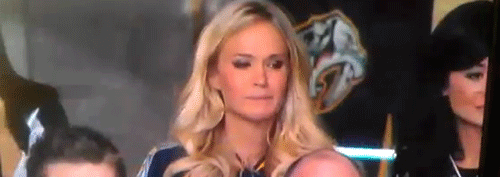Thanks to Nashville’s loss last night, as others (here and here) have pointed out, the order of Ottawa’s draft selections has essentially been finalized. In addition to their 6th overall selection, the acquired Nashville first rounder slots in at the 21st spot and the conditional compensation gives the Senators Nashville’s 3rd round pick in 2012. Interestingly, the fetched return is identical to what the Maple Leafs received from the Flyers for Kris Versteeg. Maybe it could have been more (angrily shaking fist at Melnyk), but as Kurtis Blow once said, these are the breaks.
For the savvy asset management conscious Senators fans (bless all of you), once the Predators made the playoffs, the ideal scenario played itself out for Ottawa- the Preds won one round so the Senators received an additional draft pick and since Nashville lost in the second round, it prevented the aforementioned 1st rounder from devaluing itself too much. And as an added bonus for Kiss FM listeners, the loss ultimately caused Carrie Underwood to shed some tears.
Looking back at the “We’re going to be able to trade up if we want to,” comments made by Eugene Melnyk in April on the Fan 590, I fully expect the Senators to trade up in the draft. Through correspondence with a professional scout, unless there’s one particular player who the Sens are targeting and are willing to pay the price, it seems unlikely that Ottawa would trade up from the sixth pick.
“I don’t think the gap between the second overall and the sixth pick will be large enough to make a difference (to trade up). For the Senators, Bryan Murray and company have a solid blueline prospect/talent pool and the need to fill positions up front is a priority. It’s unlikely they focus on top blueliners like Larsson or Dougie Hamilton more in that six range, while forwards within that range are all projects. Upside aside, any player picked from two to six will require development and that’s my biggest focus for this draft – how much time it will take to become NHL ready from the moment of drafting.
I feel players aren’t drafted into the NHL, they are developed (Tyler Seguin picked at 2 was clearly a struggle in his rookie season and scratched in the playoffs) and instead of focusing on the drop from the 2nd overall to the 6th, the Sens will take whichever player and focus through their development structure to make them an adequate NHL player.”
Which makes complete sense, unlike in previous years, this year’s draft class isn’t exactly headlined by some generational talent. Following up on my post about the cost/benefit analyis and I asked whether it was counter-intuitive (in asset management) to trade for Craig Anderson, move up in the standings and then trade up in the draft,
“Craig Anderson solidifies their goaltending for the next four years, giving them a veteran presence while allowing Robin Lehner to develop properly and eventually take the reigns when the rest of the prospect pool comes up to speed.I can’t see the Sens making the decision to sign Anderson without exploring all of these possibilities, including the time/cost to develop their current prospects and the players they acquire from this draft and onwards.
The point about moving up in the draft I don’t believe is an option. Just like the time when Murray traded his first round pick on the draft floor for Rundblad in 2010 shows, it’s not as much about where a team picks but more about asset management.”
If the talent gap is so small at the top of the draft pool, it seems pretty reasonable to assume that if the Senators do indeed move up, it will be to parlay that Nashville pick into one that’s higher. Using the Islander’s 2009 draft day trade that sent the 16th overall pick, the 77th pick and 182nd pick to the Thrashers for the 12th overall selection as a starting point in trade negotiations, it shouldn’t be particularly difficult for the Senators to move up or even trade for another top ten pick.
With five picks selections in the first two rounds of this year’s draft, Ottawa is afforded the luxury of trading this quantity for some quality and hopefully, Bryan Murray and his amateur scouts can continue to maximize the value from their draft picks.
Add The Sports Daily to your Google News Feed!
